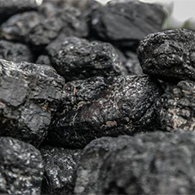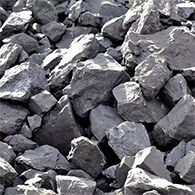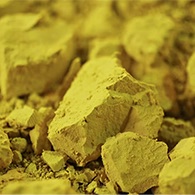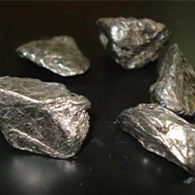DIAMOND MINING IN TANZANIA
Latest News

Requirements needed to get work permit in Tanzania

How to Establish a Foreign Company Branch in Tanzania?

How to Establish a Local Company in Tanzania as a Foreigner
Get In Touch
How Can We Help?
If you need any help, please
feel free to contact us.
+255 763 666 993
info@tanbizlink.co.tz

Diamond Mining In Tanzania
Diamond mining in Tanzania is a cornerstone of the nation’s minerals sector, even though it often stands in the shadow of the country’s rich gold deposits. Over the decades, Tanzania has emerged as one of Africa’s leading sources of gem‑quality stones, and the government continues to position the industry as a catalyst for regional development.
The best‑known operation is the Williamson diamond mine—locally called the Mwadui diamond mine—about 160 km southwest of Mwanza in Shinyanga Region. Since its discovery in 1940, this single kimberlite pipe has produced millions of carats and remains the largest open‑pit diamond mine in Tanzania. Majority‑owned and managed by Petra Diamonds in partnership with the Government of Tanzania, Williamson is celebrated for yielding rare pink diamonds alongside its steady output of clear, high‑value stones.
Beyond Williamson, several smaller diamond mines in Tanzania and ongoing exploration projects contribute to the country’s reserves. Activity around the historic Lupa Goldfield has revealed diamond‑bearing gravels, while recent licences in the Lake Victoria zone signal fresh investor interest in untapped kimberlite targets. Together, these deposits confirm that high‑quality diamond in Tanzania is not confined to a single site, but is instead distributed across multiple geological belts awaiting responsible development.
With reforms streamlining mining licences and emphasising community benefits, the outlook for Tanzania’s diamond sector is bright. As new operators join established players, the nation is poised to enhance transparency, grow local skilled jobs, and position its diamond mines as pillars of sustainable economic growth—ensuring that the story of Tanzania’s diamonds continues to shine on the world stage.
Investment Opportunities in Tanzania
MANUFACTURING
- Industry of sugar (considering a demand gap currently met through imports).
- Increasing the production of edible oil (there is a need to reduce dependence on imports).
- Manufacturing of meat, fish, fruit, vegetables, oils and fats
- Manufacturing of dairy products; manufacturing of grain mill products, starches and starch products, and prepared animal feeds
- Manufacturing of other food products (e.g., bread, sugar, chocolate, pasta, coffee, nuts, and spices)
- Tanzania relies entirely on imported automobiles, such as passenger cars.
- Natural gas, soda ash, and other minerals required by the petroleum, gas, and chemical industries have been discovered in Tanzania
- Tanzania imports 60 percent of its edible oil in 2015.
- Tanzania is one of the 20 countries that will offer the largest prospects for consumer products companies globally in the near future, notably for food and beverages.
MINING AND METAL
- Precious metals and gemstones processing
- Construction of a caustic soda refinery in Engaruka.
- Iron ore and steel production in Liganga
- Nickel processing in Kabanga; Uranium extraction in Mkuju
- Mineral smelters are being built.
- Mineral exports accounted for USD 1.37 billion (or 24 percent) of Tanzania's overall export value in 2015, with gold accounting for more than 90% of the total.
- The majority of these resources are exported in their unprocessed state, depriving the country of work.
AGRICULTURE
- Engaging in large-scale commercial cultivation of crops like sugarcane, rice, wheat, coffee, tea, sunflower, pulses, floriculture, cotton, sisal, grape, and maize. Sugarcane planting and production are aided by abundant water resources, favorable weather conditions, and a large market potential
- Development of out growers to supplement the supplies of raw materials for the industries as suitable
- Huge potential for investment in agro-industries and agro-processing
- Irrigation system expansion and enhancement; agricultural cultivation R&D improvement. Agriculture employs about 67 % of the employed population and remains central to Tanzania’s industrialization as it provides markets for industrial products and raw materials for industries
- Tanzania has the second largest livestock population in Africa;
- Less than 1% of all meat is processed locally, while vast quantities of processed meat are imported
- Freshwater cover is estimated to be 54,337 square kilometers, or about 6.1 percent of the total country's surface area;
- Tanzania has the second largest livestock population in Africa, with less than 1% of all meat processed locally while vast quantities of processed meat are imported.
- Freshwater cover is estimated to be 54,337 sq km, or around 6.1 percent of the total country's surface area.
- Tanzania currently has four sugar plantations that produce a total of 300,000 tons of sugar per year and are operating at full capacity.
- Tanzania currently has four sugar plantations that produce a total of 300,000 tons of sugar per year and are operating at full capacity
- Tanzania has one of the greatest average cane yields in the world, at 120 tons per hectare
- Tanzania has one of the best irrigation potentials in the sub-region, thanks to abundant rainfall and bountiful rivers fed by the high hinterland plateaus
- Tanzania spends more than $150,000 per year on edible oil imports. Tanzania is reliant on imported edible oil due to a lack of sophisticated mechanical extraction equipment and inadequate ways to boost agricultural output.
- Tanzania contains sunflower, cotton, groundnuts, soya beans, and palm trees, which can be utilized to underpin a competitive edible oil industry in the country and regional market with enhanced production and productivity.
TOURISM
Construction of Tourist Hotels in towns, game parks, and along the 850-mile coast line of mainland Tanzania and the gorgeous coastlines of the spice Island of Zanzibar are all regions where tourism offers plenty of investment prospects.
- The creation of recreational parks.
- Golf course construction.
- Investing in tourism-related convention facilities.
- Air and land transportation.
- Sea and lake cruising, as well as tour operations and trophy hunting.
- Ecotourism development, beach tourism, cultural and historical places
- Tanzania is the only country in the world that has set aside more than a quarter of its total land area for the conservation of wildlife and other natural resources.
In 2014, the industry continued to thrive, as evidenced by an increase in international tourist arrivals to 1,140,156 from 782,699 in 2010. As a result, tourism revenue climbed from USD 1,254.50 in 2010 to USD 2,006.32 million in 2011.
SERVICES
- Provision of mobile services, particularly in rural areas, as urban penetration is higher.
- Network/data value-added services provision and operation (internet, voice mail, electronic mail services).
- Telecommunications facility repair and maintenance
- There is a lot of room for financial institutions, microfinance banks, investment banks, agricultural banks, and commercial banks.
- In December 2015, there were roughly 39,808,4196 mobile customers in the market, compared to 2,963,737 in 2005.
- In December 2014, penetration was 67 percent, up from 10% in 2005.
- By December 2015, there were around 16,280,943 Internet service subscribers, up from 3,563,732 in 2005.
FISHERIES
- Establishing sophisticated fishing boat building yards and fish processing units.
- Establishment of eco-tourism and dry-docking facilities.
- Mafia Island has around 3000 hectares suited for shrimp cultivation.
- Commercial fish cage culture in both marine and freshwater environments
- Freshwater species such as Tilapias, African Catfish, Rainbow Trout, and Freshwater Prawns • Cultured species such as Mud crabs, Oysters, Grouper, and Scallops for mariculture
- Formulated fish feeds and live fish food production (eg. Earthworms)
- Deep sea fishing, fish processing, value addition in fish and other fisheries products, cold chain, fishing equipment and accessory manufacture
- Establishing sophisticated fishing boat building yards and fish processing units.
- Establishment of eco-tourism and dry-docking facilities.
- Mafia Island has around 3000 hectares suited for shrimp cultivation.
- Commercial fish cage culture in both marine and freshwater environments
- Freshwater species such as Tilapias, African Catfish, Rainbow Trout, and Freshwater Prawns • Cultured species such as Mud crabs, Oysters, Grouper, and Scallops for mariculture
- Formulated fish feeds and live fish food production (eg. Earthworms)
- Tanzania generated US$ 195.2 million per year from fish and fisheries goods exports between 2005 and 2010.
- Lake Victoria (shared with Kenya and Uganda), Lake Tanganyika (shared with Burundi, DRC, and Zambia), and Lake Nyasa are the country's three major interior lakes (shared with Malawi and Mozambique).
LIVESTOCK
- Establishment of joint venture projects to modernize existing ranches with National Ranching Company (NARCO) and other privately owned ranches,
- Establishment of new ranches (cattle, sheep, and goats) and farms (poultry and piggery)
- Livestock fattening
- Construction of modern slaughterhouses and processing factories;
- Establishment of breeder farms for grand and parent stock
- Establishment of animal feed processing plants to supply feeds to large local small and medium scale producers
- Establishment of commercial layers and broiler farms
- Establishment of broiler processing plants to serve as a hub/market for small and medium scale poultry production
- Establishment of tanneries, footwear and leather goods production
- Establishment of dairy farms and milk processing facilities
- Investment in livestock farming, with a priority on beef, dairy, chicken, hides, and skins.
ENERGY
- Energy generation, transmission, and distribution from a variety of sources
- Development, restoration, and expansion of power infrastructure
- Construction of petroleum pipelines and petroleum products unloading terminals; development of upcountry storage and distribution facilities
- Exploration and development of geothermal resources
- Electrification of rural areas
- Promotion of energy efficiency and conservation programs, as well as the development of new and renewable energy resources
- Currently, electricity is available to 21% of the population, with 7.4% of the population living in rural areas
- Tanzania's power sector is dominated by Tanzania Electricity Supply Company Ltd (TANESCO), a single vertically integrated national utility. • The total grid installed generation capacity of both TANESCO's power plants and private producers is currently at 1,438.24 MW. • TANESCO owns 561 MW of hydro power stations and 658 MW of thermal power plants.
- Non-hydro renewable energy accounts for less than 5% of total power generation.
REAL ESTATE
- Constructing and managing residential flats
- Constructing and managing residential flats
- Developing and managing office buildings
- Constructing and managing conference and banquet facilities
- Constructing and managing shopping malls
- Constructing and managing movie theaters and entertainment venues
- Hotel development and management
- Creating and managing mixed-use real estate projects
- Providing home finance, and so on.









